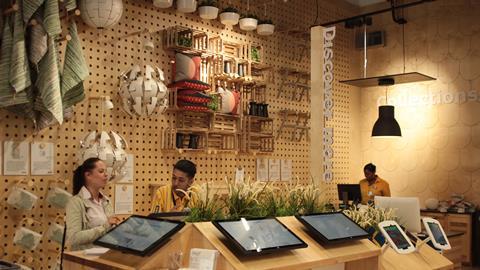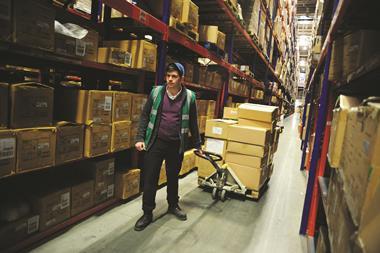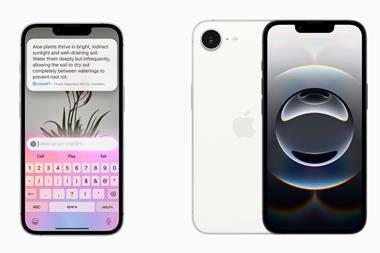It’s no longer about online or offline, it’s about compiling your assets and making them work together in a complementary manner.
The modern-day store needs to do it all – sell, fulfil and provide exemplary customer experience.
As click-and-collect, next-day delivery, order-in-store and real-time stock counts in store all become the norm, consumer expectations are now reaching new heights.
To meet those consumer demands, business priorities must be clarified and best practice across organisational structures, business processes and logistics need to be fully optimised or else companies run the risk of losing out to competitors with superior fulfilment operations.
Empowering the store associate
Technology has opened up a world of possibilities for retailers looking for new ways to engage with their customers. Yet the fundamentals of good customer service have not been rendered obsolete by the birth of iPads, wi-fi and virtual mirrors.
At the heart of a great in-store experience is giving the customer what they want, when they want it, in a way that is appropriate to the individual shopper.

One thing technology has undoubtedly done is to remove the boundaries between the physical and digital worlds. Stores and the store staff ultimately need to be seen as the glue between the online and offline worlds.
In this sense, the store associate is at the front line of retail. As the purpose of a store, from a consumer perspective, evolves so must retailers invest in empowering their store employees with the tools required to offer a stellar experience for customers.
Avoid tech for tech’s sake
The pace of change in modern retail is overwhelming for many and the number of technologies available to retailers is similarly mindboggling.
Contactless pay, iBeacons, kiosks, tablets, digital receipts, clienteling, store inventory and fulfilment solutions, PoS – the choice appears endless. The challenge for retailers is to sift through the various technologies and decide which will add the greatest value to the customer experience.
The fundamentals of good customer service have not been rendered obsolete by the birth of iPads, wi-fi and virtual mirrors
Henri Seroux, senior vice president, EMEA, Manhattan Associates
“There’s a lot of choice out there and probably one of the hardest parts is actually what to say ‘no’ to rather than what to say ‘yes’ to,” says the head of ecommerce for a men’s fashion retailer.
“There are some technologies and things that are probably over-hyped, and then there are some that are patently obvious that they’re going to be ground-breaking and you need to jump on the bandwagon pretty quickly. Mobile is a great example of that.”
This is currently one of the biggest challenges for retailers. If a retail executive invests in technology, how do they know that said technology will be relevant in two, three or five years’ time?
To help retailers overcome this challenge, the flexibility and scalability of technology solutions offered by the vendor community need to evolve in line with changing shopping habits.
Making smart decisions
Retailers need to think long and hard about which technologies are most appropriate to their business.
If a retail executive invests in technology, how do they know that said technology will be relevant in two, three or five years’ time?
Henri Seroux, senior vice president, EMEA, Manhattan Associates
Many will simply not fit the retailer’s culture, others will not deliver a return on investment and a few will add significant value to the customer experience.
For some retailers, fancy front-end gizmos will play second fiddle to the more mundane but equally important business of building robust back-end structures.
By understanding their business, knowing their options and making sound investment decisions, retailers can turbo-charge their stores and put them back to work.
Henri Seroux, senior vice president, EMEA, Manhattan Associates































No comments yet